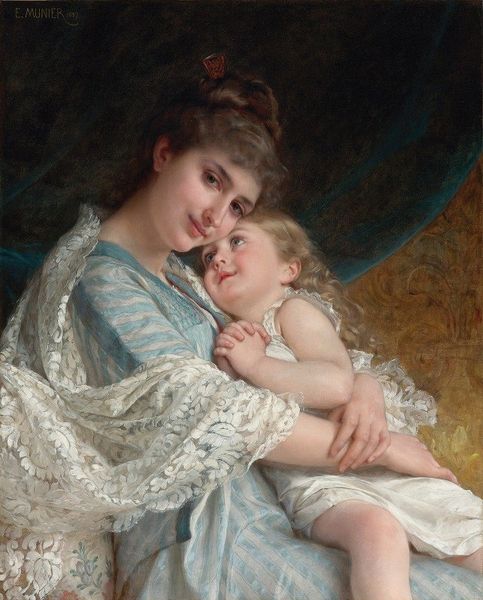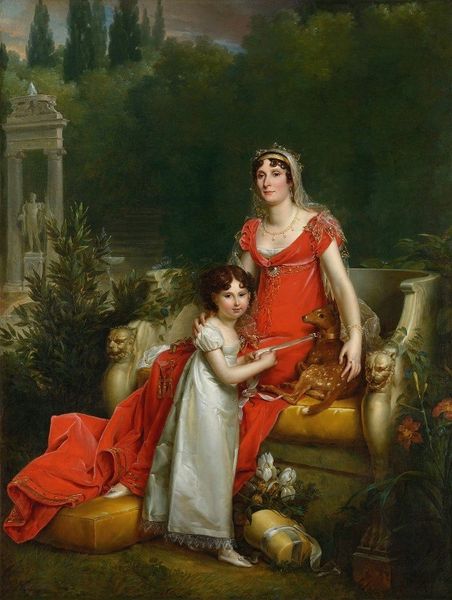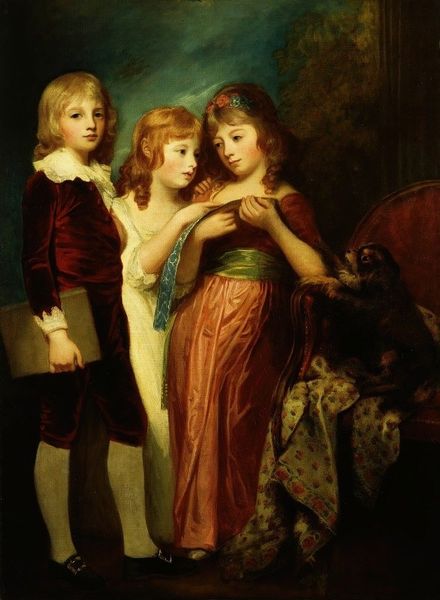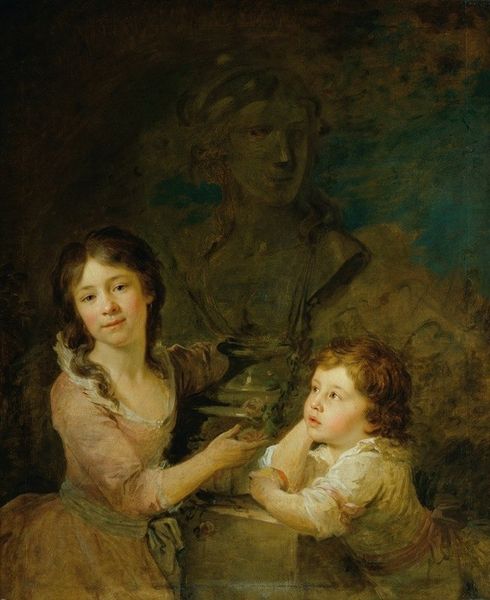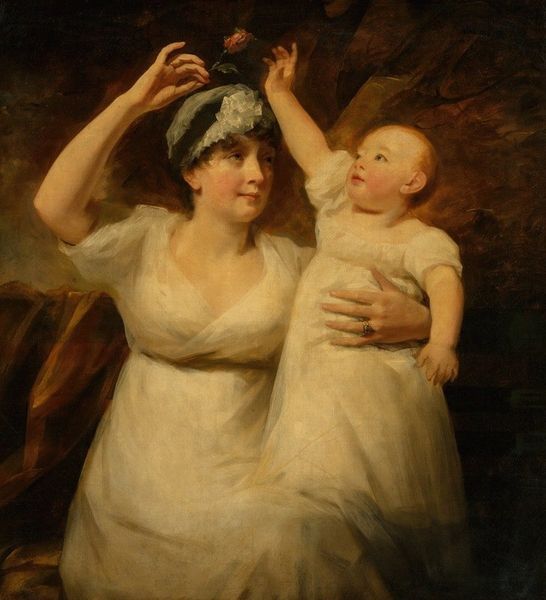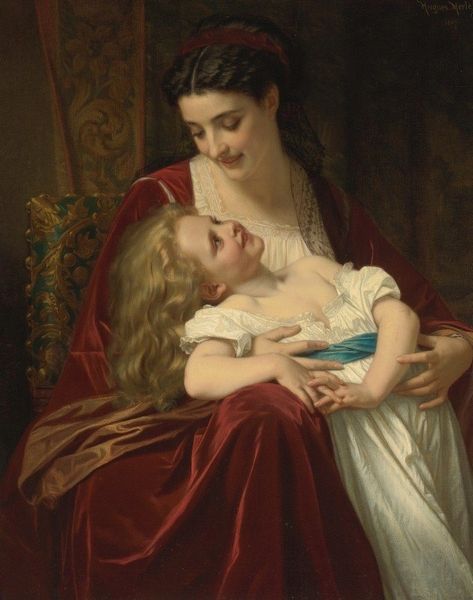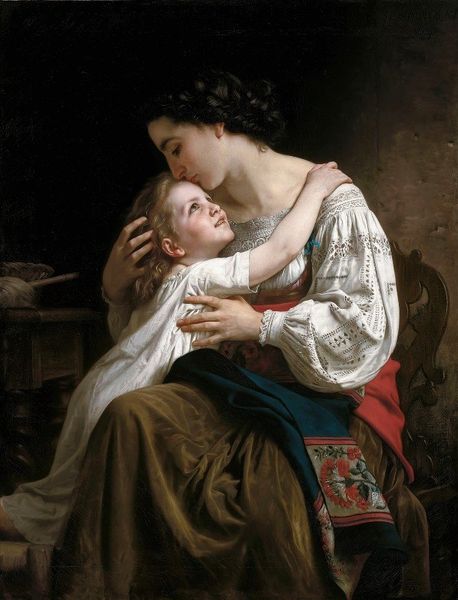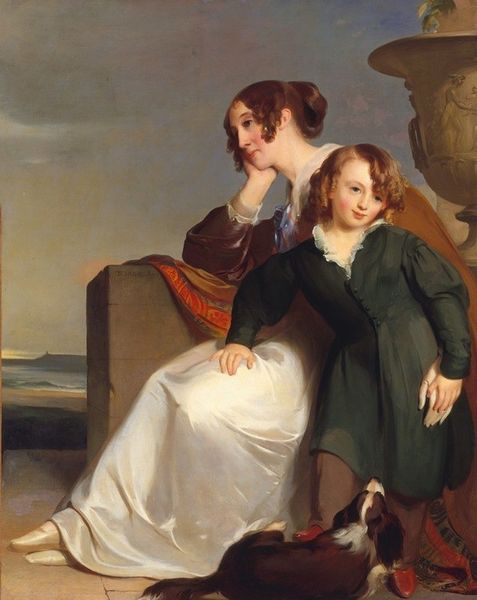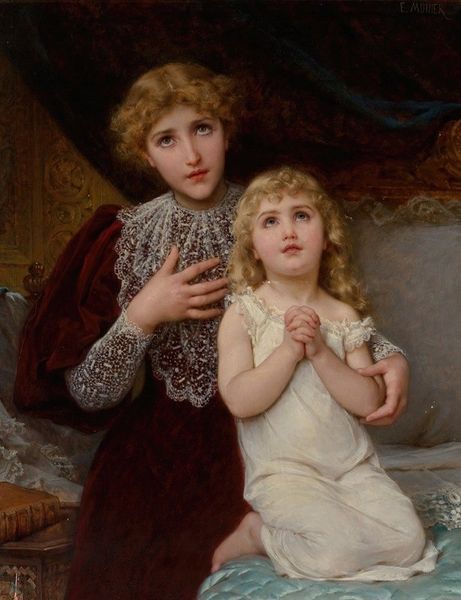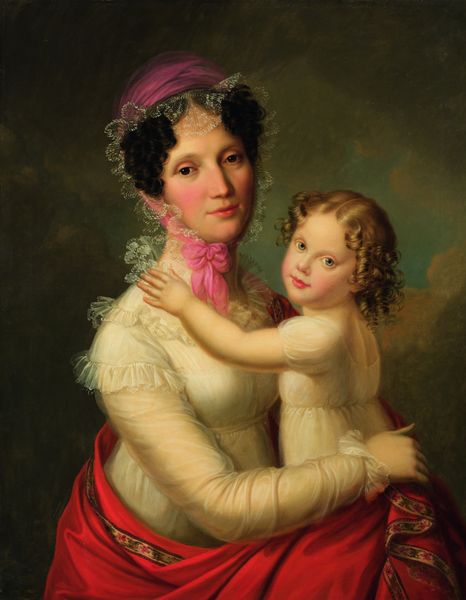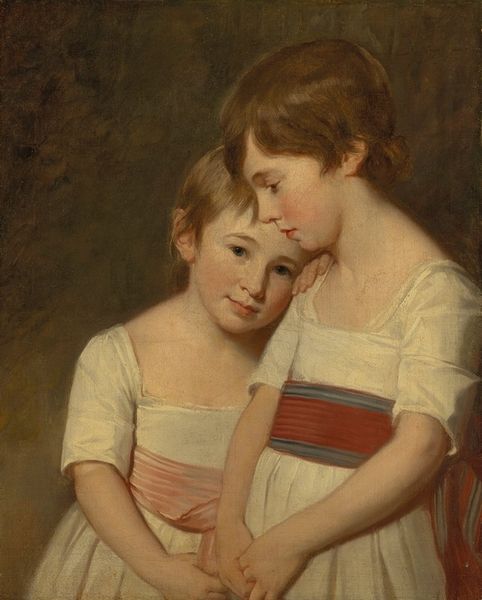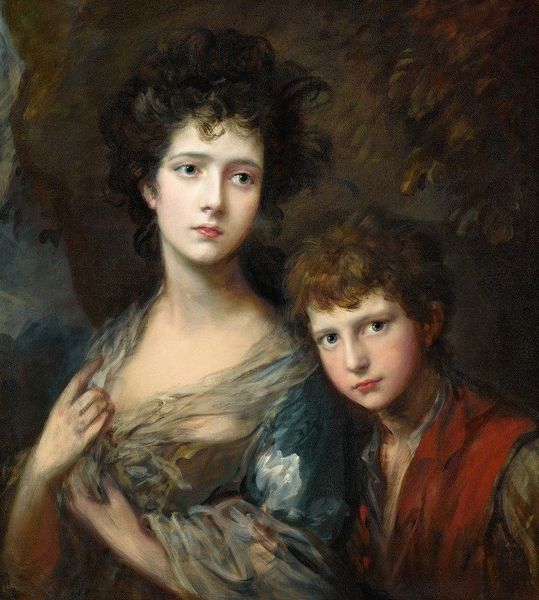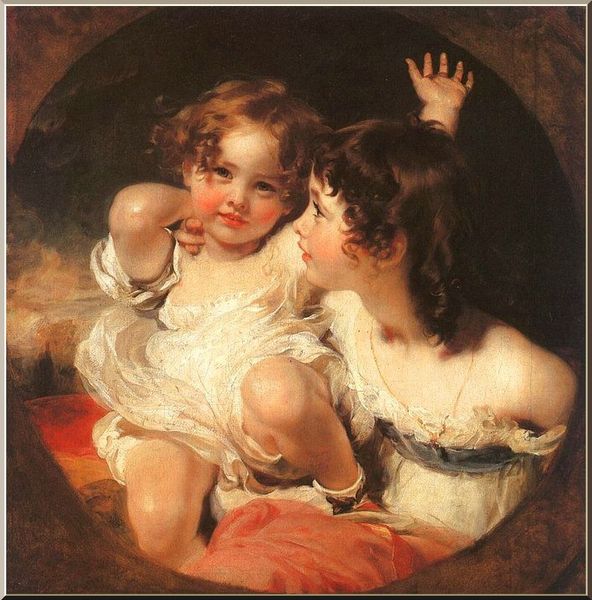
Portrait de Madame Bauquin Du Boulay et de sa nièce Mademoiselle Bauquin de La Souche 1810 - 1815
0:00
0:00
painting, oil-paint
#
portrait
#
figurative
#
painting
#
oil-paint
#
group-portraits
#
romanticism
#
academic-art
Copyright: Public Domain: Artvee
Curator: This is François Gérard’s “Portrait de Madame Bauquin Du Boulay et de sa nièce Mademoiselle Bauquin de La Souche,” painted sometime between 1810 and 1815. The painting offers us an intriguing window into the visual language of family portraiture during the early 19th century in France. Editor: Ah, a study in serene composure…and a tiny spark of upward longing in the child’s gaze. There's something both grounded and a bit ethereal about this. Sort of like catching a whisper of a secret, you know? Curator: Absolutely. Gérard's positioning of the subjects within the painting space conveys a deliberate message. Madame Bauquin Du Boulay is centrally located, her gaze meeting the viewer directly. The niece, Mademoiselle Bauquin de La Souche, however, is off to the side and slightly behind, her eyes fixed upwards in a contrasting position that symbolizes, perhaps, different roles and trajectories within the family structure and broader society. The context of Romanticism cannot be ignored when examining the attention to evoking sentimentality. Editor: I’m taken by the way the fabrics catch the light – the soft folds of their white dresses against the backdrop of what looks like the edge of the woods. It feels like a stage, almost, and the single pop of color from the draped red fabric lends it just the right touch of drama. Like a novel waiting to happen. Do you think the choice of the setting – presumably a park, from what’s implied – was intentional to show they're closer to nature? Curator: Exactly! The garden setting certainly speaks to the values being placed on the natural world. It is a distinct choice that elevates this piece within a cultural milieu undergoing transformation, including the rise of bourgeois culture and new notions of domesticity. These settings served as spaces where identity and social roles were not only displayed, but actively shaped and understood. Editor: It’s funny, how portraits can give us these small intimate fictions about real people. I bet if they knew that we are looking, years after, they'd laugh and maybe strike a totally different pose. Wouldn’t that be interesting to consider? Curator: Indeed. Considering it’s not just a rendering, but a cultural object carrying within it ideological traces. And with its focus on femininity and familial relationships, the piece allows a conversation around the changing status and representation of women during that era. Editor: So, looking at this portrait today makes you reflect on a lot of things then, right? Curator: Yes, from issues surrounding gender roles, to the cultural symbolism of garden settings. It gives a profound opportunity for deeper reflection. Editor: See? Just two women, but their whole story can create such vivid stories for years. What could be more marvelous than that?
Comments
No comments
Be the first to comment and join the conversation on the ultimate creative platform.
